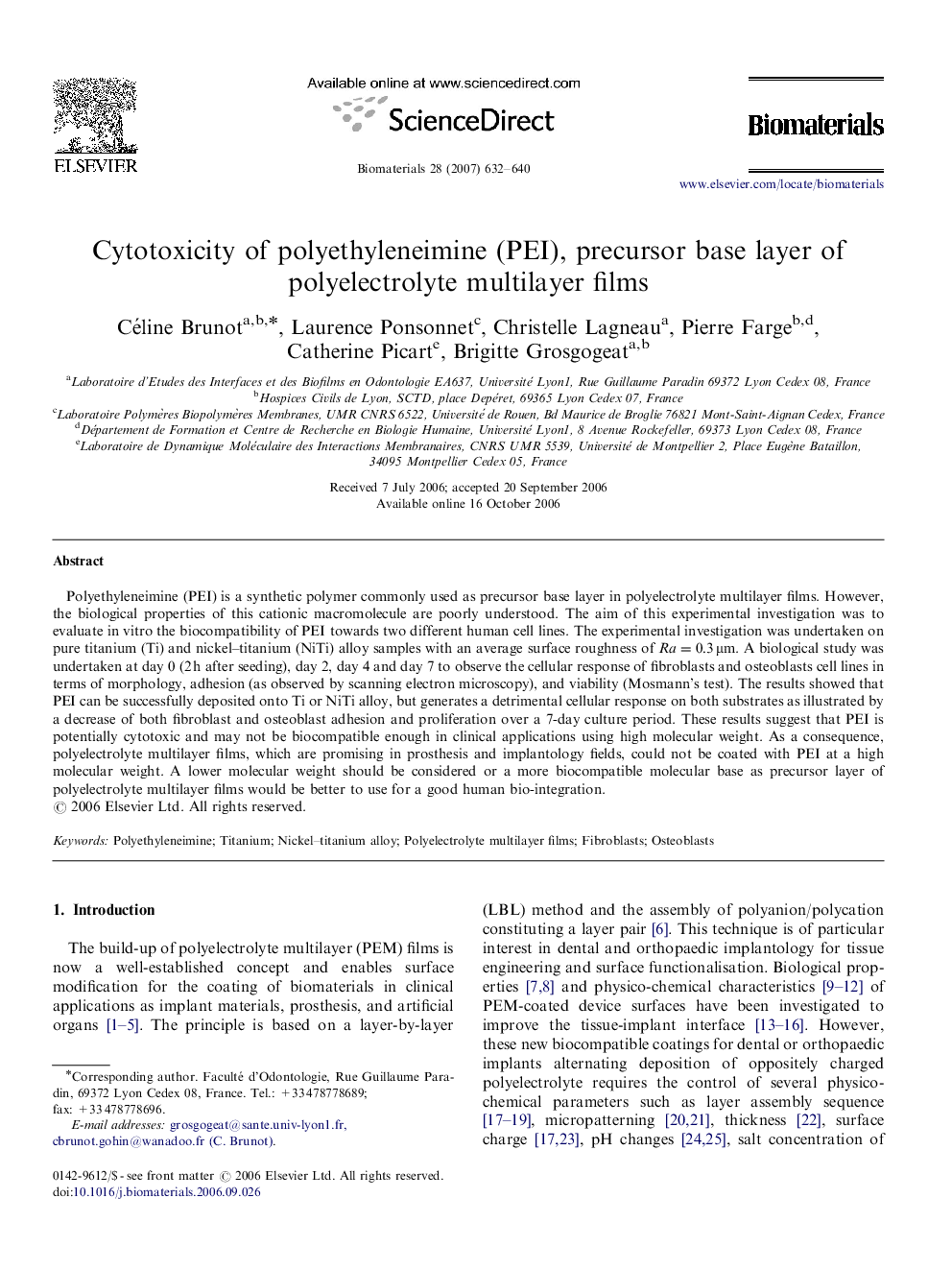| Article ID | Journal | Published Year | Pages | File Type |
|---|---|---|---|---|
| 11145 | Biomaterials | 2007 | 9 Pages |
Polyethyleneimine (PEI) is a synthetic polymer commonly used as precursor base layer in polyelectrolyte multilayer films. However, the biological properties of this cationic macromolecule are poorly understood. The aim of this experimental investigation was to evaluate in vitro the biocompatibility of PEI towards two different human cell lines. The experimental investigation was undertaken on pure titanium (Ti) and nickel–titanium (NiTi) alloy samples with an average surface roughness of Ra=0.3μm. A biological study was undertaken at day 0 (2 h after seeding), day 2, day 4 and day 7 to observe the cellular response of fibroblasts and osteoblasts cell lines in terms of morphology, adhesion (as observed by scanning electron microscopy), and viability (Mosmann's test). The results showed that PEI can be successfully deposited onto Ti or NiTi alloy, but generates a detrimental cellular response on both substrates as illustrated by a decrease of both fibroblast and osteoblast adhesion and proliferation over a 7-day culture period. These results suggest that PEI is potentially cytotoxic and may not be biocompatible enough in clinical applications using high molecular weight. As a consequence, polyelectrolyte multilayer films, which are promising in prosthesis and implantology fields, could not be coated with PEI at a high molecular weight. A lower molecular weight should be considered or a more biocompatible molecular base as precursor layer of polyelectrolyte multilayer films would be better to use for a good human bio-integration.
